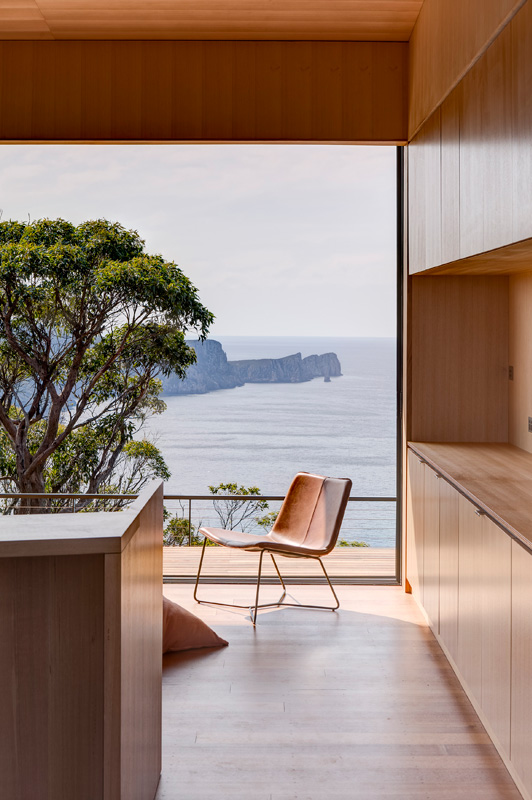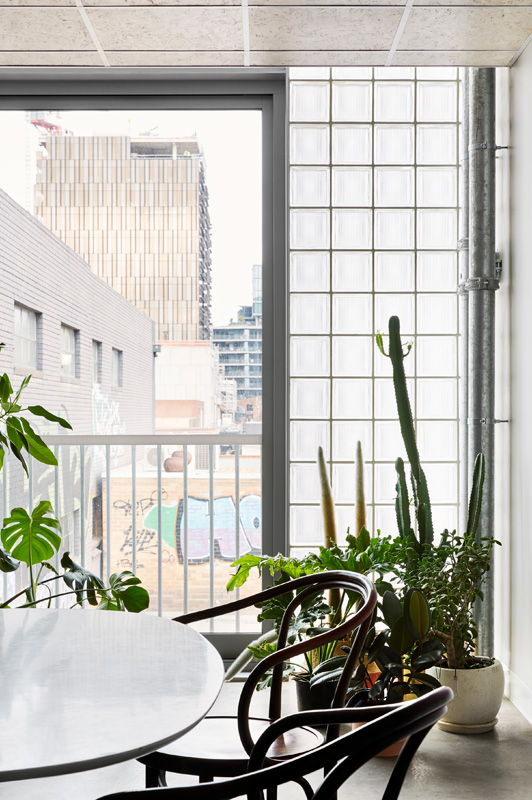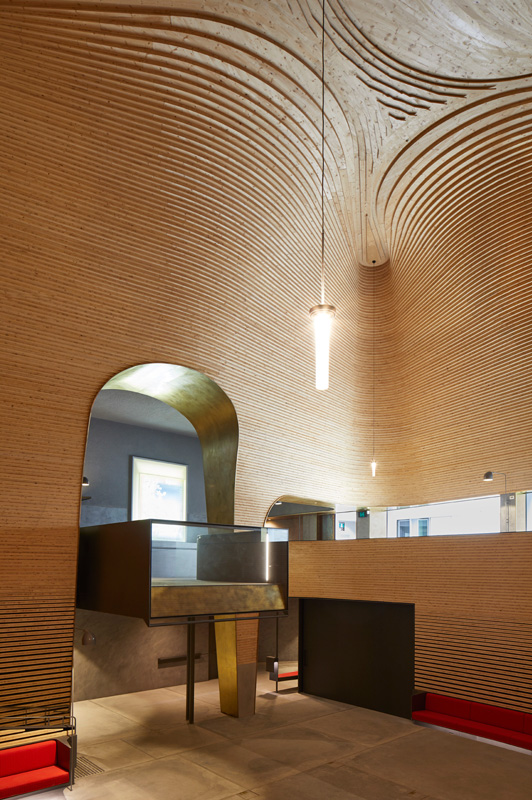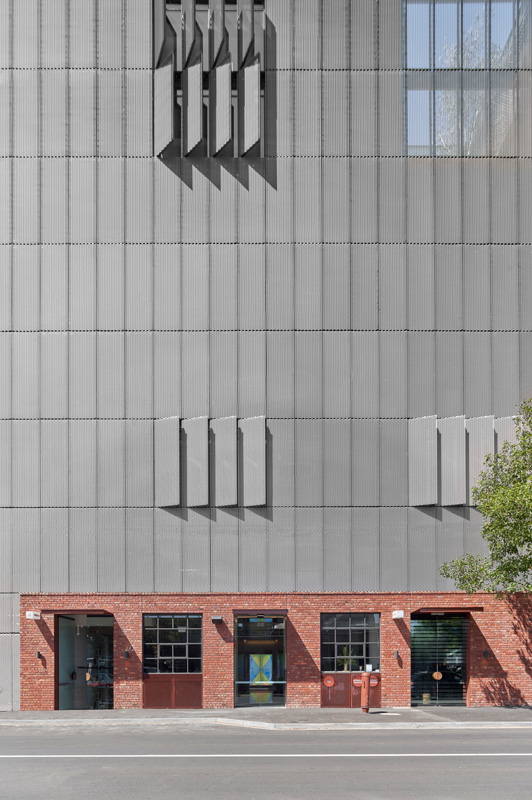A remote getaway in the Tasmanian wilderness, a reworked inner-city Edwardian warehouse and a chic gallery/performance space are among the commercial projects shortlisted for this year’s Australian Institute of Architects’ National Architecture Awards.
The awards will be announced during a streamed event on November 5, the first time in the near 40-year history of the awards that anyone from around Australia and the world will be able to catch the announcement live.
The institute’s National Jury announced its shortlisted projects across 14 categories last week, selecting 76 projects including 5 in the commercial category:
THREE CAPES TRACK LODGES

Three Capes Lodge. Andrew Burns Architects. Photographer: Brett Boardman Photography
The Three Capes Track luxury cabins by Andrew Burns Architects are nestled in bushland sites along the length of the four-day Three Capes Track walk located on the Tasman Peninsula in Tasmania’s south-east.
Construction of each involved flying in preassembled components by helicopter in 800 kg loads. These were then assembled flat-pack style on site by a small team of craftsmen.
All cabins were built taking into consideration bushfire threat, off-grid power, water collection, bird strike, salt spray and care and protection of flora and fauna.
In the case of bird strike for instance, window seats were designed with tilted glazing to reflect the ground to prevent birds flying into windows. Bushfire resistant timbers were chosen for all cabins.
Luxurious yet designed with elegant simplicity, the team from Andrew Burns Architects aimed to create the ultimate “immersive wilderness experience.”
“Whether a guest is in the communal areas, bedrooms or even amenities, the surrounding flora and fauna is just, right, there!” a spokesperson said.
DARAMU HOUSE

Daramu House. Tzannes. Photographer: Ben Guthrie
At the opposite end of the spectrum is the commercial and retail building Daramu House by Tzannes, located in Sydney’s Barangaroo. Daramu House means treehouse and is so named as the project pushes the limits for timber construction. The project sits alongside the award-winning International House Sydney, Australia’s first engineered timber office building when completed in 2017, and the pair make a striking contrast in an area dominated by concrete skyscrapers.
Between the two buildings, the latest developments in mass timber buildings are on display. Comprising six storeys of timber on one-storey concrete, Daramu House is built with cross-laminated timber (CLT) - part of a new wave of pre-build construction technologies produced from timber, and glulam, or glue-laminated timber. It also features an expanded 9m x 9m structural grid at its heart, currently the largest in the world for mid-rise commercial projects, while the commercial entry on Sussex Street features an impressive 18m span in timber, created through an innovative structural solution that utilises the bracing as a timber truss.
“The timber used in the façade features (of Daramu House) is recycled hardwood timber from old telegraph poles which significantly reduces the carbon footprint of the building,” explains Matthew Davidson, leading façade consultant and regional manager NSW for Inhabit.
In addition, roof-top planting captures rain and the building has 700 sqm of solar photo-voltaic cells providing a 105 kilowatt array to supply power to the precinct.”
Daramu House is described as a world leader in sustainability and innovation meeting the highest environmental standards, is designed to provide optimal wellbeing and has secured WeWork as a tenant for the entire building.
LIGHT BOX

Light Box. Clare Cousins Architects. Photographer: Tess Kelly
Light Box by Clare Cousins Architects saw the transformation of a small inner-city warehouse in Melbourne’s Collingwood into a modern and especially inviting complex of spacious offices. Tenant experience is enhanced primarily by delivering as much light as possible into what is a highly constrained site that only receives direct light on one side.
Key to drawing light into the building is the use of glass bricks across most of this one side. Other light-giving components are the generously sized courtyard and light-well at the rear of the building, and at the front, a full-height fire stair surrounded by plants. The clever design prioritises light, ventilation as well as flexible floor plates, and has resulted in Light Box fetching record rental yields for the area.
PHOENIX CENTRAL PARK

Phoenix Central Park: Durbach Block Jaggers and John Wardle Architects. Photographer: Martin Mischkulnig
This $32 million gallery and performance space in Sydney’s inner-city Chippendale was a collaboration - John Wardle Architects designing the gallery in the east wing and Durbach Block Jaggers designing the performance space. The areas are linked centrally by a central courtyard and garden.
The two architecture firms were charged with realising the vision of billionaire arts philanthropist Judith Neilson whose dream encompassed weaving together the visual arts with performing arts. The performance space is described as a “bell shaped clearing” and features extraordinary and visually striking stepped and contoured timber ribs “embedded in a fabric of lobbies and circulation”. Brickwork binds the entire building, the bricks being unusually long and flat, with a thin veil of mortar washed over them to exaggerate continuity.
Phoenix Central Park is so spectacular that it claimed multiple prizes at the NSW Architecture Awards earlier this year including the highest honour of the NSW Architecture Medallion. It also won awards for interior and commercial architecture.
9 CREMORNE ST

9 Cremorne St. Fieldwork. Photographer: Peter Clarke
This office building by architects Fieldwork bookends a corner and becomes a gateway to the boutique Cremorne precinct, Richmond, 1.5 km from Melbourne’s CBD.
It has a striking façade that changes appearance throughout the day as occupants open and close the louvred windows designed especially to allow control of access to sunlight, provide natural ventilation, views and control glare and temperature to suit the specific zone in which they are working.
As such, 9 Cremorne St is described as “designed for Australian conditions”. The tenant is more than happy with the end result, noting “the unique façade screens let our team adapt their workplace throughout the day to suit environmental preferences – closing the screens noticeably lowers the internal temperature, and the louvres provide fresh air in the afternoon.”
Architects had to consider the tight city fringe site with a historically significant early Edwardian factory. The building, a fully screened rectangular office addition sits above the warm brickwork of the heritage base.